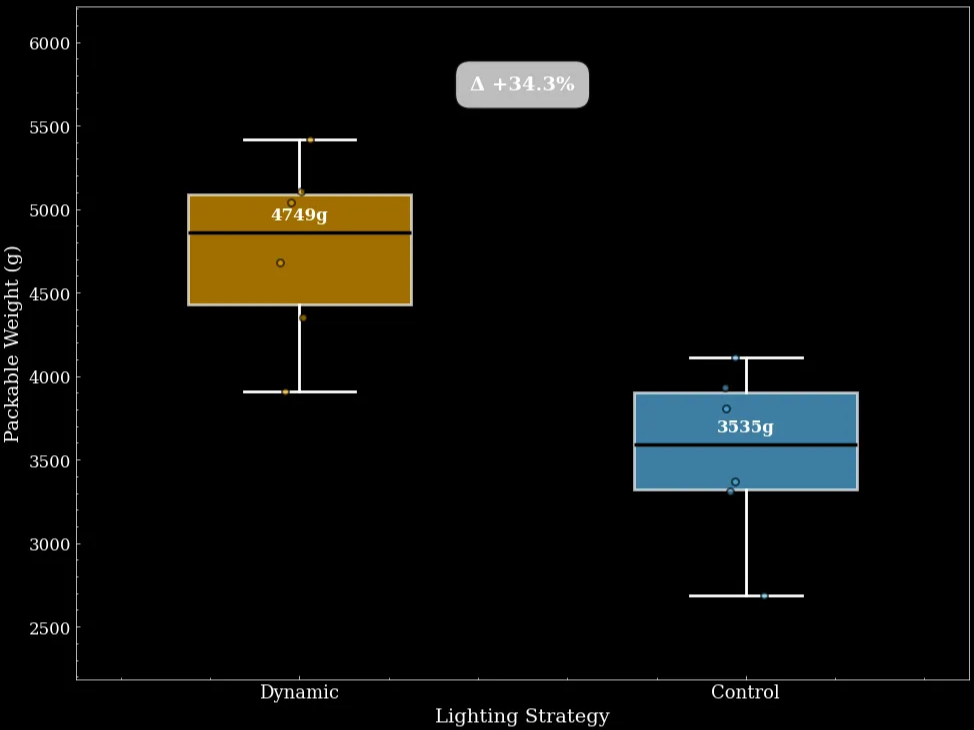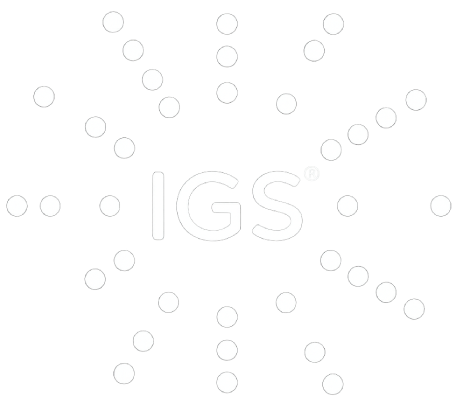
- Industry: Lettuce Grower
- Region: Europe
Ljusgårda boosts yield by 34% using Gardin's real-time plant insights
- 61%
photosynthesis boost - 34%
higher yield
Summary
- Gardin detected drought stress within 24 hours enabling a fast response.
- Boosted photosynthesis by 61% with dynamic lighting.
- 34% higher yield using real-time photosynthesis insights
Ljusgårda operates one of the World's most advanced vertical farms, producing year-round lettuce crops under full LED lighting in Sweden. In early 2025, their R&D team partnered with Gardin to explore how real-time plant feedback could drive smarter decisions, helping growers optimise light strategies, detect stress early, and maximise yield.
Gardin's crop monitoring system detected drought stress in just 24 hours, days before visually seen by the grower. Gardin's photosynthetic insights also enabled better decisions on lighting levels, increasing photosynthesis and driving a 34% gain in packable yield. These results highlight how real-time plant data can unlock more precise management of both irrigation and lighting, delivering significant improvements in crop output.
Highlight: 34% yield increase with dynamic lighting informed by real-time plant feedback
Introduction
Ljusgårda operates one of the world's most advanced vertical farms, producing premium lettuce year-round under full LED lighting in Sweden. As part of their vision for the next generation of vertical farming, the team is developing cultivation systems that translate plant signals into actionable insights, helping growers make more informed decisions about climate optimisation.
In 2025, Ljusgårda partnered with Gardin to explore how real-time photosynthesis data could optimise both crop performance and resource efficiency. The trials, carried out in the innovative multi-tier cultivation systems at Ljusgårda's R&D facility, aimed to answer two key questions:
- How early can Gardin detect stress events such as drought?
- Can Gardin's real-time photosynthesis insights be used to fine-tune lighting strategies to maximise yield?
Through a series of experiments, they showed that plant-driven decisions can deliver significant yield gains and improved light-use efficiency.
Early Drought Detection by Monitoring Photosynthesis
In a controlled drought experiment, two groups of lettuce were grown side by side in a vertical farming system. One group received standard irrigation, while the other experienced progressive drought stress: watering was stopped on 3 February, the plants were kept under water-limited conditions until 12 February, and then normal irrigation was resumed. Gardin sensors detected stress, a reduction in the photosynthetic efficiency of the lettuce, within 24 hours of water withdrawal, days before visible wilting. Gardin’s chlorophyll fluorescence measurements are highly sensitive to stress because photosynthetic efficiency declines early in response to drought. As the plant closes its stomata and reduces photosynthesis to conserve water, it increases photoprotection, which Gardin detects as a drop in efficiency during light capture.
Continuous monitoring of lettuce provided an early warning signal of water stress, allowing the grower to respond before lasting damage occurred. This trial demonstrated Gardin's ability to deliver actionable early warnings for water-related stress in vertical farming environments, where visual inspection often lags behind physiological change.

Daily Photosynthetic Efficiency identifies early drought stress during Ljusgårda water-use trial. Initially, Water-limited group was given half the water of the well-watered control. Then, on 2025-02-03 water was completely withdrawn from the water-limited lettuce plants. Gardin saw an immediate decline in photosynthetic efficiency the following day, which continued to deteriorate until the plants were recovered by resuming water supply.
Photosynthesis-Guided Light Optimisation
In a series of light optimisation trials, Ljusgårda used Gardin's photosynthesis monitoring system to determine the light levels that drive crops toward their photosynthetic maximum. Previous internal research had defined the optimal lighting recipe, which served as the benchmark for improvement. Photosynthesis is a highly sensitive process, influenced by microclimate, stress, plant age, and many other interacting factors. By directly measuring photosynthetic performance, Gardin enables growers to see exactly how hard their plants are working.
At Ljusgårda, light response curves showed that lettuce crops were operating below their photosynthetic maximum, indicating that light intensity could be safely increased to unlock greater productivity. The team therefore adjusted light levels to meet plant demand, achieving a 61% increase in photosynthetic electron transport, the captured light energy that drives CO$_2$ fixation, and a 34% increase in yield compared with control groups using the previous best recipe.

Light optimisation supported by Gardin's photosynthetic insights enhanced packable weight at harvest by 34%. The control lighting group was previously identified light recipe. In the dynamic group, Gardin's photosynthetic performance insight informed the grower that the lettuce had increased capacity for light, leading to 34% increase in packable weight.

Light optimisation supported by Gardin's photosynthetic insights led to increased photosynthetic productivity by 61%. Hourly productivity shows the amount of light absorbed by the plant used for photosynthesis (electron transport rate). Increasing light intensity increased electron transport, providing more energy for CO$_2$ fixation.
The results demonstrated the potential for significant cost savings in lighting with plant feedback. Measuring the plant enables smarter optimisation than recipe-based approaches, where adjusting one variable is time consuming and ineffective. Gardin enables rapid optimisation by reducing feedback times from days to minutes through real-time photosynthetic data.
Conclusion
Through these trials, Ljusgårda demonstrated how real-time plant insights can transform vertical farming performance, unlocking substantial gains in productivity and resource efficiency. By integrating Gardin's photosynthesis insights into operations at their R&D facility, Ljusgårda detected stress days in advance and optimised lighting strategies to match plant potential, achieving more than a 34% improvement in yield and efficiency. For Ljusgårda, this work represents an important step toward data-driven cultivation, which can become an important tool for maximising the return on investment for their commercial farm.
Gardin offers an easy-to-use, fully autonomous system for monitoring crop photosynthesis. Its insights help growers target the optimal climate strategy, including lighting and shading, to maximise yield at the lowest cost.
To start your journey towards understanding your plants better, please contact us to start the sales process.
RELATED CASE STUDIES

Gardin Plant Feedback Generates Extra €200k/ha/yr

Preventing Light Stress and 10% Production Loss

40% Yield Increase with Light Recipe Optimisation
Should your case study be featured here?
Speak to our team to find out what Gardin Pulse will unlock for you.
Contact sales